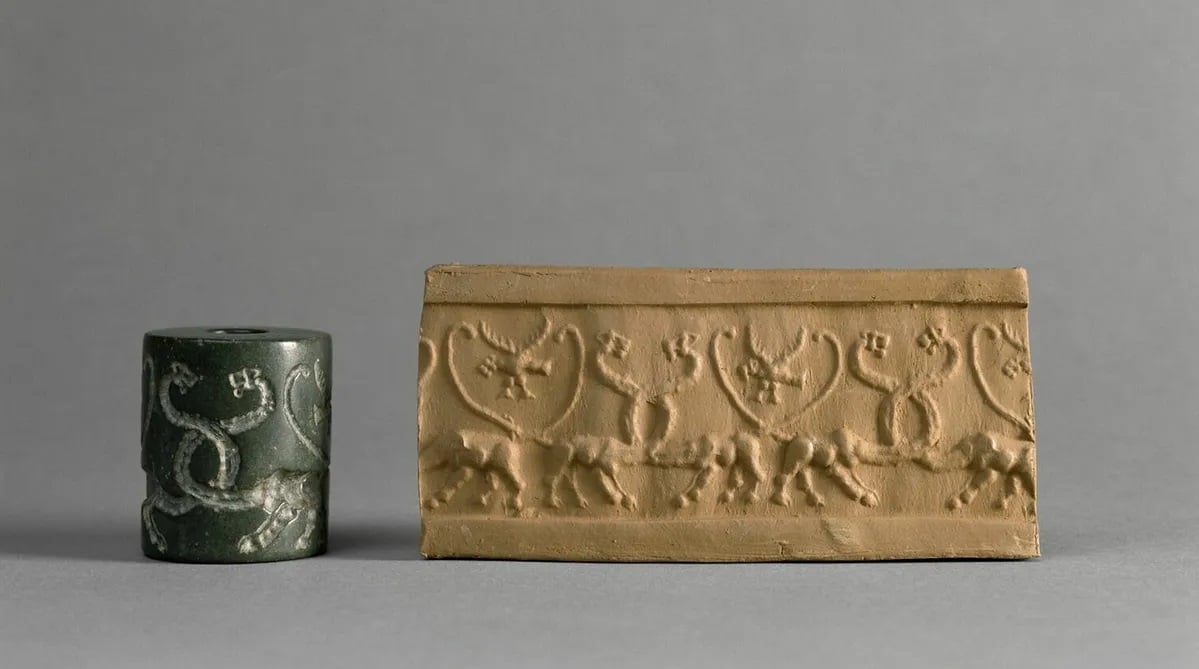(NLDO) - Cylindrical seals from 4400 BC have reinforced the idea that was once proposed about where the first human writing originated.
According to Live Science , researchers from the University of Bologna (Italy) analyzed a number of pre-literate cylindrical seals of ancient Mesopotamia that were used in agricultural and textile trade.
Detailed analysis shows that cuneiform writing - believed to be the first form of writing known to mankind - may have been heavily influenced by the symbols on these seals.

A cylindrical seal and the symbols it makes, some of which closely resemble some of the earliest writing - Photo: LOUVRE MUSEUM
The most amazing thing is that the seals were created in 4,400 BC, which is more than 6,400 years old.
The discovery reinforces an idea proposed in previous research that cuneiform writing was developed in Mesopotamia around 3100 BC, according to a paper published in the scientific journal Antiquity .
Scientists also suspect that the writing originated as accounting methods to track the production, storage, and transportation of popular items here.
In the new study, the authors specifically point out that some symbols on the cylinder seals have identical outlines to some characters in "proto-cuneiform".
It is a type of writing that was found on 5,000-year-old clay tablets from the ancient Sumerian city of Uruk in southern Mesopotamia, an area that is now southern Iraq. It is the oldest writing ever excavated.
The newly examined seals were mainly used in the transport of ceramic jars and cloth, some of which appear to be associated with temples.
Such cylindrical seals were used for millennia across Mesopotamia, where they were rolled onto clay tablets to imprint designs on them, often to verify a transaction or open a letter.
Cuneiform writing used a stylus to create wedge-shaped impressions on unfired clay. These impressions created signs representing sounds to record spoken language.
The clay can be dried or fired, preserving the markings.
Cuneiform was developed by the Sumerian civilization, who built the first cities in southern Mesopotamia from about 550-2300 BC.
The area was later inherited by the Akkadian Empire, which had its capital at the city of Akkad.
The Akkadians adopted the Sumerian writing system but applied it to their own language.
Akkadian written in cuneiform then became the common written language of Mesopotamia for over 2,000 years, during the subsequent Babylonian and Assyrian periods.
Source: https://nld.com.vn/bau-vat-6400-tuoi-chi-ra-nguon-goc-chu-viet-dau-tien-196241106095014177.htm



































































































Comment (0)